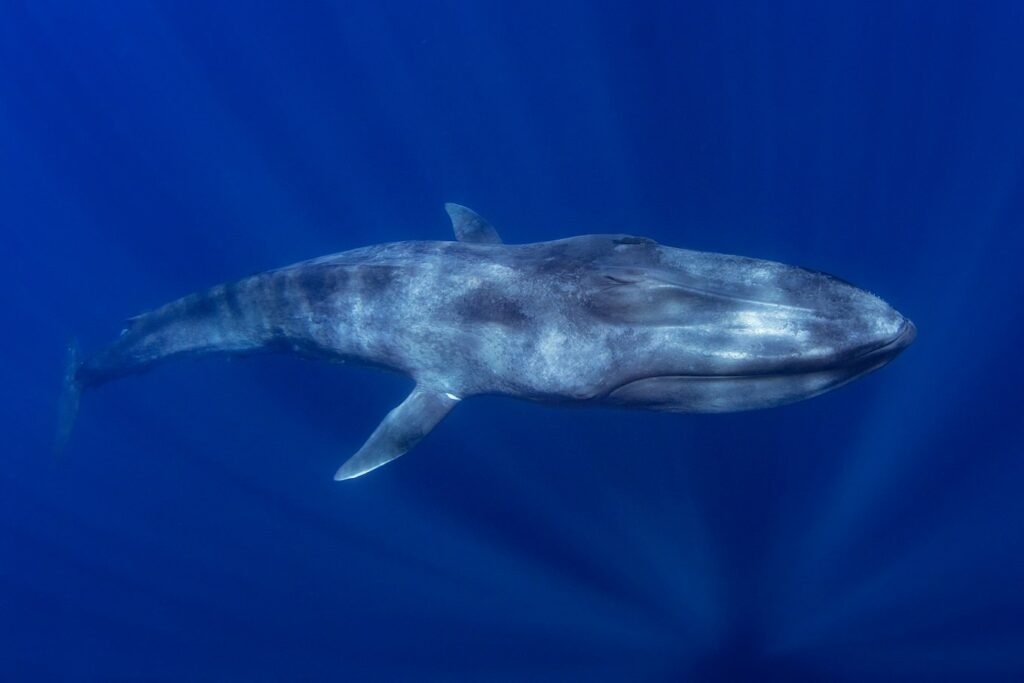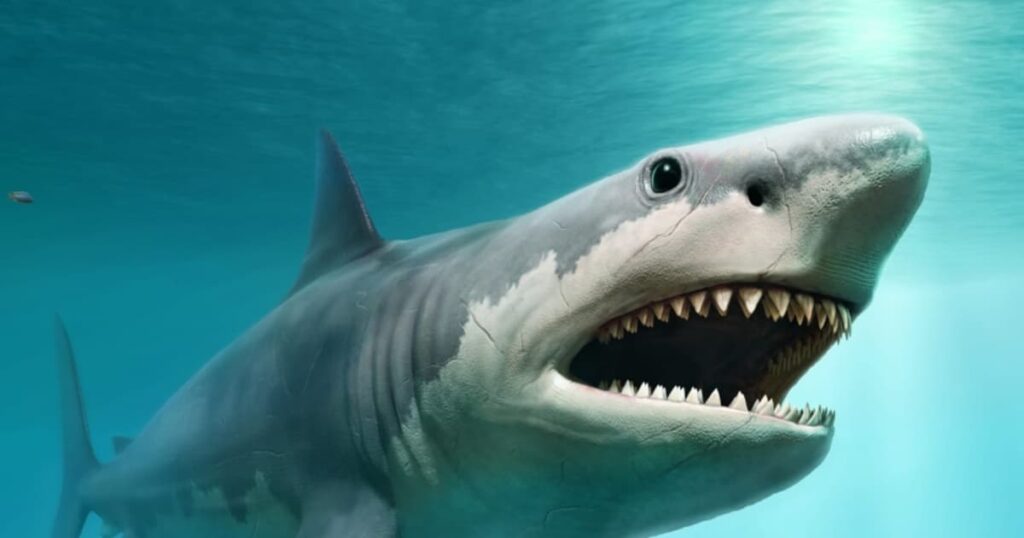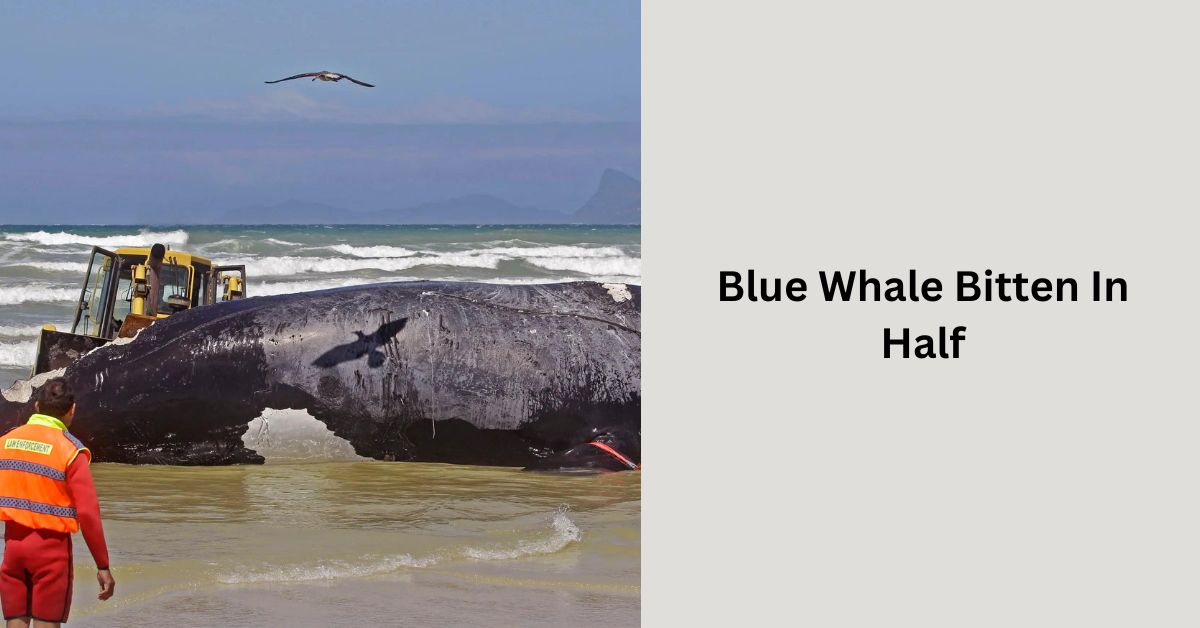Blue Whale Bitten In Half – Big News!
The vast expanse of the world’s oceans hides mysteries and wonders beyond human comprehension. Among the colossal creatures that roam the deep, the blue whale is the largest known animal on Earth.
Where a massive blue whale was attacked and bitten in half by a shark. It underscores the rarity of such encounters in nature, highlighting the power and unpredictability of marine life.
This incident not only sheds light on the power struggles within ocean ecosystems but also prompts deeper inquiries into the mysteries of the deep sea.
Understanding The Blue Whale – Discover The Facts Now!
Before delving into the shocking event of a blue whale being bitten in half, it is crucial to comprehend the sheer magnitude and significance of these majestic creatures.
Blue whales, belonging to the Balaenoptera musculus, are the largest animals ever known to have existed on our planet.

With lengths reaching up to 100 feet and weights of over 200 tons, these marine giants command awe and reverence from all who encounter them.
Their sheer size and graceful movements make them iconic symbols of the ocean’s vastness and beauty.Blue whales are baleen whales, meaning they filter-feed on small crustaceans known as krill.
Despite their massive size, they sustain themselves by consuming vast quantities of krill, using specialized plates in their mouths to filter out these tiny organisms from the water.
Their migratory patterns take them across oceans, from polar regions to equatorial waters, in search of optimal feeding grounds. Despite their immense size, blue whales are not invulnerable.
They face threats from human activities such as ship strikes, entanglement in fishing gear, and habitat degradation due to pollution and climate change.
The Case of the Bisected Blue Whale – Discover the Mystery!
Amidst the tranquil expanse of the ocean, where the laws of nature govern the delicate balance of life, an unsettling event unfolded—an encounter that defied expectations and left marine biologists and enthusiasts baffled.
Reports emerged of a blue whale discovered in two halves, a sight both horrifying and unprecedented.
The incident occurred off the coast of a remote island chain, far from human civilization, where the deep blue depths conceal secrets known only to the ocean’s denizens.

Witnesses described a scene of carnage, with the severed halves of the blue whale floating ominously in the water, surrounded by a cloud of blood and the scent of death.
Marine biologists and researchers scrambled to understand what could have caused such a catastrophic event.
Initial speculation centered on the possibility of a collision with a large vessel or an encounter with a pod of aggressive killer whales.
However, as investigations progressed, a more chilling hypothesis began to take shape—another predator had bitten the blue whale in half.
Read Also: Frndly Tv – Find Out Everything You Need To Know!
Is Megalodon still ruling the oceans? – Learn More About It!
The notion of a blue whale falling victim to predation challenges conventional wisdom about the hierarchy of oceanic predators.
Blue whales, with their immense size and formidable presence, are considered apex predators, occupying the top of the marine food chain.
Few creatures dare to challenge their dominance, and encounters with potential predators are rare.
However, the incident of a blue whale being bitten in half forces a reevaluation of these assumptions and highlights the complex dynamics within ocean ecosystems.

One potential candidate for such a formidable predator is the elusive and enigmatic creature known as the megalodon.
Believed to have gone extinct millions of years ago, the megalodon was a prehistoric shark of staggering proportions, dwarfing even the most giant modern-day great white shark.
While the existence of living megalodons remains speculative and contentious among scientists, some theorists suggest that these ancient predators may still roam the ocean’s depths, evading human detection and preying on unsuspecting marine life.
The idea of a living megalodon raises tantalizing possibilities and chilling implications for our understanding of marine ecology.
If these colossal sharks persist in the uncharted depths of the ocean, their presence could profoundly affect the dynamics of marine ecosystems.
The encounter with a blue whale, long considered invulnerable, serves as a sobering reminder of the power and adaptability of nature’s predators.
Securing Our Seas – Protect Marine Life Today!
Beyond its sensational aspects, the incident of a blue whale being bitten in half carries significant implications for marine conservation efforts.
As apex predators, blue whales play a crucial role in maintaining the health and balance of oceanic ecosystems.
Their decline would have cascading effects on marine biodiversity, potentially leading to disruptions in food webs and ecosystem functioning.

The incident is a stark reminder of the threats marine megafauna face in an increasingly human-dominated world.
Climate change, habitat degradation, overfishing, and pollution pose existential challenges to the survival of species such as the blue whale.
By highlighting the vulnerability of even the most giant creatures in the ocean, the incident underscores the urgent need for proactive conservation measures to protect marine biodiversity and preserve the integrity of ocean ecosystems.
Read Also: Personalized Necklaces: A Timeless Expression of Individuality
FAQs:
1. What is the significance of this incident?
It prompts a reevaluation of the hierarchy of oceanic predators and highlights the complex dynamics within marine ecosystems. It also highlights the need for greater public awareness of the fragility of marine ecosystems, and for greater conservation efforts to protect them.
2. Who are the potential predators of blue whales?
While encounters are rare, the incident raises speculation about formidable predators like the megalodon. However, blue whales are also threatened by human activities such as overfishing and pollution, which can have devastating consequences.
3. Could megalodons still exist today?
While speculative, some theorists suggest their survival, which could have significant implications for marine ecology. However, due to the lack of fossil records, it is difficult to confirm whether they did or still exist.
4. Why is this event significant?
It underscores nature’s power and adaptability, challenging our understanding of the ocean’s inhabitants and their interactions. This highlights the fragility of the ocean’s ecosystems and the need for greater research and conservation efforts.
Conclusion:
The incident of a blue whale being bitten in half by a predator, likely a large shark, is a rare and extraordinary event that emphasizes the dynamics and power of marine ecosystems.
Read Also:





